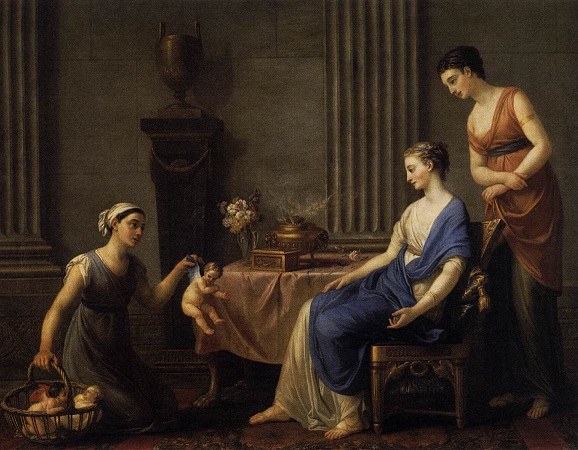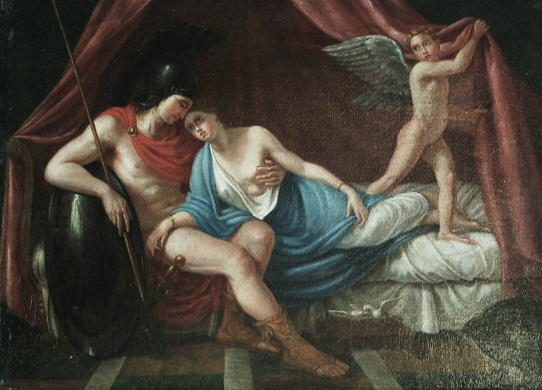<Back to Index>
- Physician Charles Louis Alphonse Laveran, 1845
- Painter Joseph Marie Vien, 1716
- Regent of Hungary Miklós Horthy de Nagybánya, 1868
PAGE SPONSOR


Joseph-Marie Vien (18 June 1716 – 27 March 1809), French painter, was born at Montpellier. He was the last holder of the post of Premier peintre du Roi, serving from 1789 to 1791.
Protected by Comte de Caylus, he entered at an early age the studio of Natoire, and obtained the grand prix in 1745. He used his time at Rome in applying to the study of nature and the development of his own powers all that he gleaned from the masterpieces around him; but his tendencies were so foreign to the reigning taste that on his return to Paris he owed his admission to the academy for his picture "Daedalus and Icarus" (Louvre) solely to the indignant protests of François Boucher.
When in 1776, at the height of his established reputation, he became director of the school of France at Rome, he took Jacques Louis David with him amongst his pupils. After his return, five years later, his fortunes were wrecked by the French Revolution; but he undauntedly set to work, and at the age of eighty (1796) carried off the prize in an open government competition. Napoleon Bonaparte acknowledged his merit by making him a senator.
Joseph-Marie Vien died in Paris, and was buried in the crypt of the Panthéon (to date, the only painter so honored). He left behind him many other brilliant pupils, amongst whom were François-André Vincent, Jean-Baptiste Regnault, Joseph-Benoît Suvée, Jean-Pierre Saint-Ours, François-Guillaume Ménageot, Jean-Joseph Taillasson and others of high merit; nor should the name of his wife, Marie-Thérèse Reboul (1728 - 1805),
herself a member of the academy, be omitted from this list. Their son,
Marie Joseph, born in 1761, also distinguished himself as a painter.





